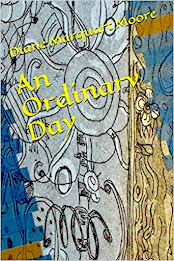 Brenda Lowry can belt out a blues song as strong as any voice I’ve heard singing the blues, but she also has a clear, sweet voice when she’s singing in the “Heavenly Choir” at the Episcopal Church of the Epiphany here in New Iberia, Louisiana. And then there’s “Women at the Well, “ a program in which she sings spiritual songs she created and recorded with Joshua Murrell at the keyboard who supplied some of the music. It’s about women who figured prominently in Jesus’ life and ministry but whose stories were left out of the Gospels and who inspired Brenda and Bubba to produce “Women at the Well.”
Brenda Lowry can belt out a blues song as strong as any voice I’ve heard singing the blues, but she also has a clear, sweet voice when she’s singing in the “Heavenly Choir” at the Episcopal Church of the Epiphany here in New Iberia, Louisiana. And then there’s “Women at the Well, “ a program in which she sings spiritual songs she created and recorded with Joshua Murrell at the keyboard who supplied some of the music. It’s about women who figured prominently in Jesus’ life and ministry but whose stories were left out of the Gospels and who inspired Brenda and Bubba to produce “Women at the Well.”
In a book Brenda just created, she relates the stories of these women after going on a retreat in the “Holy Day Inn” at Camp Hardtner (the Diocese of Western Louisiana’s camp). “I began writing and playing,” she writes in Living Water. “Words poured out. I was playing chords that I didn’t know, just finding things on the guitar…” Several of the songs from that time at Camp Hardtner became, along with an earlier one she’d written entitled “Rock My Baby Jesus,” the actual seeds of the program for “Women at the Well” that she and Joshua now perform at churches, schools, restaurants, mission houses, informal parties, and in living rooms throughout the U.S.
The first presentation of “Women at the Well” was performed at the Solomon House, an outreach mission in New Iberia, Louisiana for which I was director many years. It followed my ordination to the Diaconate, and Brenda refers to me as the “midwife” of the collection of songs and an encourager of her “creative recovery.” I’m honored by her acknowledgments and by a poem of mine, “Ground of Your Beseeching,” that she and Joshua now open with when they perform “Women at the Well.” In Living Water, she describes it as a call to ministry for all — women, men, and youth.
The stories of women in the New Testament that inspired Brenda range from the adulterous woman whose life was saved and turned upside down following her encounter with Jesus to a favorite of most audiences, “Martha’s Blues,” a blues song that she sang in a concert to raise money for the Order of St. Mary at Sewanee, Tennessee where I reside part of the year.
Brenda also tells the story of losing her hearing in one ear and how this sensorineural hearing loss has not kept her from singing and recording, “processing some signals differently,” she explains. It’s a moving story that shows Brenda’s tenacity and her call to ministry.
One of my favorite songs in Living Water is “This Is My Bread” that Brenda wrote after watching the consecration of the host at Eucharist one Sunday. “Who Made the Bread?” she asked herself. “No, not the church supplier but the bread at the Last Supper. Who baked it? I know what bread baking is like, leavened and unleavened. It takes time, effort and care. As Passover was approaching, the bread no doubt would have already been made, and much of the meal already prepared as well. It was a woman’s job, and there had to have been a woman behind that meal…”
The complete words to songs in Living Water are contained in this book of stories about the women in Jesus’ life. Brenda writes that “there is a Jewish tradition called Midrash, a Jewish term that refers to the exploration and exegesis of a biblical text. A modern news commentator might call it ‘unpacking.’ I simply call it the what ifs.’ What if this were the backstory? What if? And then what if…these were women whose lives were forever changed because of their meeting Jesus.”
In the next edition of Living Water, Brenda hopes to include the actual music from songs included in “Women at the Well,” this musical program she regards as “a call to discipleship.” You can order the book and the CD track from samaritan woman@bellsouth.net.
Note: Cover photo of Living Water by Engin Akyurt on Pixabay.com with modification by The Swampgoddess.

















